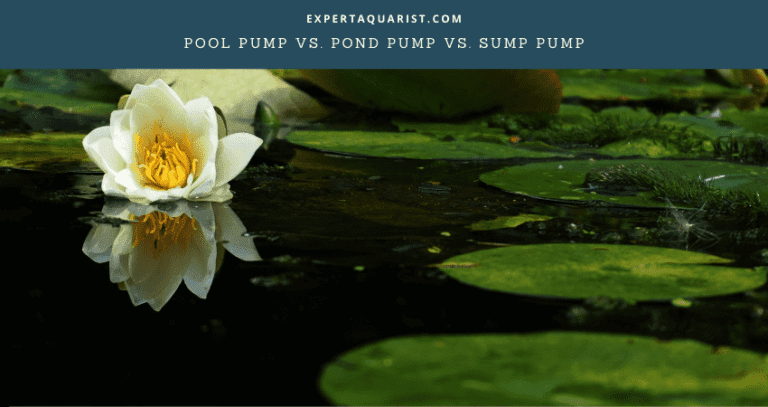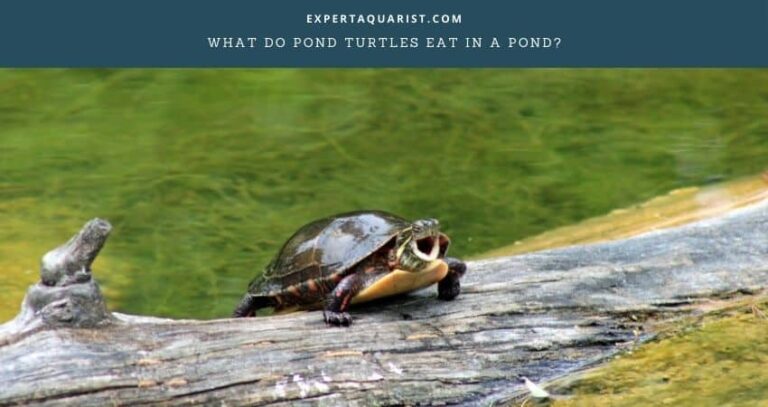Algae are an important element of a pond. It supplies the fish with necessary food as well as produces oxygen. But when the conditions are right, they can grow to a level that harms the pond’s ecosystem greatly. Getting rid of this excess level of algae and keeping them in control is a difficult task.
Having fish that eat algae as a major part of their diet helps to keep the level of algae to a minimum and eliminates the chance of getting their growth out of hand. There are a lot of fishes that can be kept in a pond for eating algae, such as koi, guppies, and even a couple of species of sharks.
Let’s take a look at the best algae-eating fish for ponds and the factors you should consider when introducing them into the pond.
Best fishes for eating pond algae
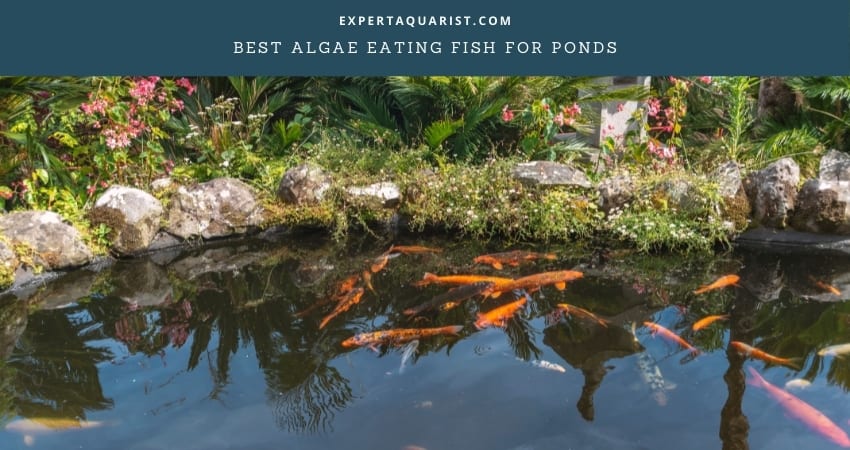
There are a whole host of fishes that you can choose from which are excellent algae eaters. What fish you will put in your pond will vary according to the pond size and other factors.
1. Siamese Algae Eater
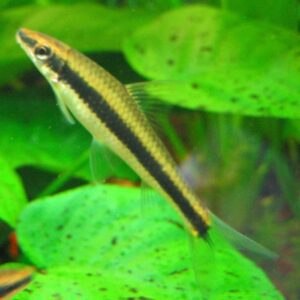
The name says it all. The Siamese Algae Eater consumes the algae in your pond like there is no tomorrow. A kind of freshwater carp, they don’t discriminate among the algae they consume, from string algae to the usually unappetizing red algae, these voracious fish eat every kind of algae there is. Native to Asia, they cling to the sides of ponds, rocks, and plants with the help of their mouth which resembles a sucker, and sucks algae up like a vacuum cleaner.
But you have to keep a few things in mind when deciding to keep them in your pond. First, the temperature of your pond should between 77 and 82 degrees Fahrenheit while the pH levels should be 6.5 to 8.0. So if you live in cooler weather, it is better to not have them in your backyard pond.
Second, the size of your pond should be a bit large. These fish love to swim around the pond, so a small pond will deprive them of such opportunity, which will stress them out.
Third, they are a little aggressive. Add to that they grow up to 11 inches long, it is best if you don’t keep them with small fish, such as minnows. But they will do pretty well with koi or goldfish.
2. Chinese Algae Eater

Similar to their Siamese cousins, the Chinese Algae Eaters also have a huge appetite for algae. They are relatively less aggressive and couldn’t care less about territories. All they want to do is munch on the algae that grows in their habitats. They eat every sort of algae, from brown to green to black, making them an ideal choice for a pond.
The factors to consider when keeping them in a pond are the water condition of the pond and its neighbors. These fishes also prefer warmer waters similar to the siamese ones. You should keep your pond’s temperature from 74 to 80 degrees Fahrenheit and the pH levels between 6.0 to 8.0
They do well with fishes that can take care of themselves, making them an ideal choice for keeping them along with koi and goldfish.
3. Common Pleco

Native to South America, these large and beautiful fish are probably the most voracious among all the other fishes in the entire list. Also known as janitor fish, they intend to get rid of every bit of algae there is in a pond. They are especially effective against the filamentous algae, which is the main culprit behind the algal blooms.
They can survive in colder climates, with water temperature being as low as 50 degrees Fahrenheit. But due to their large size, which can reach up to 2 feet given the right circumstances, the pond they are being kept in should be rather large one. For a single fish, the ideal size of the pond must be at least 1000 gallons.
They are very compatible with other fishes and don’t cause too much trouble when kept in ponds. Even when there are other plecos around in a pond, they don’t compete with each other.
But keep in mind that these fish will not only eat algae but also various invertebrates and crustaceans. So you have to keep either of Plecos or those animals in a pond.
4. Bristlenose Pleco
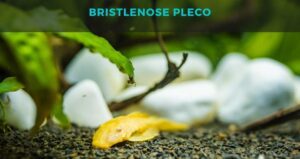
The Bristlenose pleco, also known as the black suckerfish, are the smaller cousins of the Common pleco. A much smaller variety of pleco, they grow to about 5 inches in length. Their small size along with their peaceful nature makes them an excellent choice to keep in a small pond. They only need water volumes up to 20 gallons. Also, they can survive in waters with low temperatures up to 50 degrees Fahrenheit. Their favorite food is the green spot algae.
5. Gold Nugget Pleco

The aptly named Gold Nugget Pleco is a stunning fish that can only be found in Brazil. They are shy fish which eat everything like other plecos. These fishes are not aggressive at all which makes them an excellent neighbor for fishes like koi and goldfish.
However, the only fish they will have problems with are the aggressive ones. They can be a little territorial with other bottom-dwelling species. They are freshwater species that need warmer waters to survive.
6. Pond Loach

These are an excellent choice to keep in ponds that are in cold climates. As they are not tropical species, they can easily survive in cold waters. The ideal temperature of the pond should be between 40 to 77 degrees Fahrenheit.
They are not as voracious as plecos, but a few of these fishes are enough to keep the number of algae in a moderately sized pond in check. Moreover, these fishes are also very adaptable, as they have been seen to have created an excellent relationship when kept with koi and goldfish.
Pond Loach can get rid of not only the algae in your pond but also the insects and their larvae. So if you are facing problems related to mosquitoes, they can be of great help.
Remember that loaches can jump pretty high and far, so you may need to add barriers to prevent them from jumping out of the pond. Also, they like to hide, so if you can’t find them, look in the pond filters.
7. Koi and Goldfish

Now that we have discussed the loaches, it is time to talk about their buddies, the Koi and Goldfish. They are the most common of all algae-eating fishes that are kept in ponds. Both of these fishes are omnivores whose diet comprises everything that they can get their fit their mouths around.
There are a lot, and I mean a lot of species of koi and goldfish, and all of them are equally beautiful. But there are two problems with these fishes.
First, they not only eat algae but also everything else in the pond, which makes keeping plants and other invertebrates a bit tricky. Second, they only eat algae when other food sources are scarce and when they are about to go into their inactive period. But this reduced amount of algae-eating does help other fishes as they can also get their fair share of algae.
These fish need larger ponds to thrive, the ideal size being 1000 gallons with a pH level between 6.9 to 7.8. They can tolerate cold waters, as long as it does not freeze completely in the winter.
8. Grass Carp

Another Asian fish, Grass Carps were originally cultivated for it to be used as food, but its efficiency in algae control has now made it a common choice in ponds for that particular purpose. Although they live on plant materials, that’s not where they got their name from. They are named as such because of their olive-colored, torpedo-shaped bodies.
The main diet of grass carps contains algae such as chara, which is more commonly known as musk grass. Although these plants are somewhat beneficial as they help infiltration and provide shelter for small fish, their growth is uncontrollable and rapid.
Grass Carps also eat elodea and duckweed, two other beneficial plants which produce oxygen but have a rapid growth rate. They also eat the filamentous algae which cause the algal bloom. As these fish can eat up to 3 times their body weight a day, and mind you, they can grow to 55 pounds, these fishes are one of the best options to have in your pond to get rid of algae.
But Grass carps come with their luggage. As they are quite large, they only are suitable for larger ponds. Also, their reproduction rate rivals that of the algae they eat. They reproduce so fast, that in some US states you are only allowed to use the Triploid Grass Carps, a sterile variety of these fish.
9. Mollies and Guppies
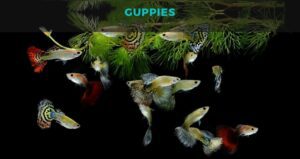
From the large Grass Carps now we come to the small Mollies and Guppies. These tiny little fish are very much suitable for smaller ponds in warmer climates. Their diet contains many things, so it won’t help in getting rid of the excessive algae if you have only one fish in your pond.
So, you need to have a small group of them to have any significant effect on the algal bloom. These little fish prefer to eat the softer green algae that are most beneficial to the pond. In addition to that, they also eat the eggs and larvae of the insects, which helps a lot if you are having problems with mosquitoes.
These fish are somewhat fragile and can’t tolerate cooler temperatures at all. Especially Mollies need their water temperature to be above 75 degrees to survive. So, you must bring them inside as soon as the temperature starts to drop.
Another problem with these fish is that they breed too fast. So not only will they overcrowd your pond in a short time, but as they eat beneficial algae, they may in turn harm the pond environment by eating too much of them. So you must keep an eye on their population.
10. Otocinclus Catfish
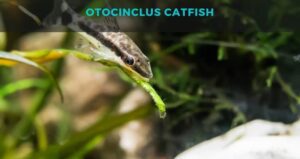
These little guys are the cousins, albeit much smaller, of the common pleco. They are sometimes also called the dwarf suckermouth catfish as they grow to only a couple of inches long. They share their cousins’, the plecos’, appetite for the algae which lies at the bottom of the pond. Their habitats are perfect for their job as well. As they are small, they prefer to live in shallow waters, which is the place where most problematic algae grow.
They are an excellent choice to have in smaller ponds as they are small, peaceful, and nonaggressive. But while introducing them into your pond, make sure that there aren’t any large fish around which can prey upon them. Also, keep them in a small group as opposed to a single fish in your pond.
These guys prefer warmer waters of between 72 to 82 degrees Fahrenheit. The minimum size of your pond should be 30 gallons.
11. Channel Catfish
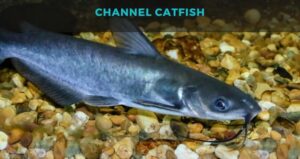
These are your typical catfish with whiskers and all. They grow to about 2 feet in length which makes them eligible for large ponds only. They will eat up any kind of algae they can find along with many other things. This is what makes them somewhat of a problem.
Not only will they eat the food you feed to your koi, but they will also bully them, stressing them out. As they are predatory fish, they will also eat other small fish. Because of this aggressive nature, people usually think a second time before stocking them in their ponds. But under the right environment, they can be quite sociable with other fishes.
Make sure your pond is about 1000 gallons in size and at least 8 feet deep. They prefer waters that are 75.2 to 86 degrees Fahrenheit in temperature with a pH level of 5.5 to 7.5.
12. Twig catfish
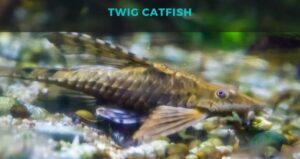
These guys get their name from their thin and elongated bodies and a pointy snout. They are very peaceful animals who get on well with just about any fish in a pond. These fishes are suitable for small ponds and should be stocked in pairs.
If you have a pond that is about only 12 gallons in size, you will be able to keep them in your pond. These fish like stable waters, which is a perfect growing condition for algae. So they are a very good choice to have to remove algae. Twig catfishes need a lot of places to hide. You have to feed them supplemental foods from time to time and they will be just fine.
They need slightly warmer water with temperatures between 73 and 79 degrees Fahrenheit. The pH value of the water should be 6.0 to 70.
13. Chinese high-fin banded shark

Isn’t it great that you can say with pride that you own a shark? Well, the Chinese high-fin-banded shark isn’t a shark at all, but it looks like one. It got this name due to the dorsal fin that they have that resembles a shark’s one.
They are also called freshwater batfish, which means when it comes to branding, they are in a win-win situation. They are also bottom dwellers like Plecos and the Otocinclus Catfish. But unlike those species, they don’t suck the algae up.
These fish grow relatively slowly, but once they grow to full size, they even make the Plecos look like dwarves. They are social animals, so it is better to introduce a few fish at a time. They also get along very well with other fish in the pond, so you don’t have to worry about fighting among the fish.
Due to their size, you have to keep them in large ponds with no less than 1000 gallons in size. They can endure slightly lower temperatures, with the ideal pond temperature being from 61 to 72 degrees Fahrenheit, although they can survive in waters that are 40 degrees Fahrenheit. The ideal pH value should be between 6.9 and 7.8.
Although they eat algae, you have to feed them krill, koi pellets, or earthworms from time to time.
14. Flying Fox
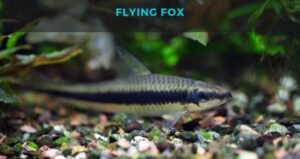
Not only do these fish not fly, but they are not, well, foxes. They get sometimes confused with another Asian fish, the Chinese Algae Eater. But unlike their Chinese counterparts, they are found in southeast Asia.
These fish most commonly eat green algae. Also, these six-inch-long fish are very friendly with other fish, but not all fish like them. They are very full of energy which sometimes irritates other fish. They are suitable for small ponds and like warmer temperatures.
15. Mosquito Fish
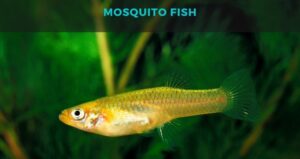
Despite being known for its mosquito-eating prowess, the Mosquito fish is omnivorous. Due to this, they also enjoy eating algae. Due to their small size, they often become prey to other larger fish in the pond, so make sure that they have a lot of hiding places. Other than this, they get along well with other fishes.
They are very hardy fish that can survive in both cold and warm climates. Yes, these fishes can survive in much colder and warmer temperatures than any other fish on this list. Mosquito fishes live in water that is as cold as only 30 degrees Fahrenheit, and as warm as 104 degrees Fahrenheit. Their ideal temperature though should be around 80 degrees with pH levels between 6.5 to 8.0.
Can you keep anything other than fish to eat algae?
It’s not the fish that can solve your algae problem only. The Black Japanese Trapdoor Pond Snails are also an excellent animal to have in your pond to keep the algae levels in your pond in check. Usually, people don’t want snails in their ponds as despite getting rid of algae efficiently, they reproduce in great numbers during the warmer seasons. This in turn creates a problem greater than the algal bloom.
But in the case of the Trapdoor snails, unlike other snails, they give birth to a few young snails as opposed to laying hundreds and thousands of eggs. So, you can have them in your pond without any worry.
Can Fish eliminate all excessive algae?
There are a lot of ways to eliminate the algae in your pond. But the problem with those is, that other than being costly, they get rid of all the necessary algae as well.
So, the natural way of removing algae is the most efficient. Yes, they won’t get rid of all the algae during the algal bloom. But they will reduce the baseline level of algae to a level where it will be difficult for them to overwhelm the pond. Also, in most cases, the beneficial algae get a chance to blossom.
Things to consider while introducing algae-eating fish to your pond
You can not just stock fish in any pond at will. Just chucking a few fish in a pond and expecting that all the algae will be gone will not do the trick. There are a few things you need to consider while choosing which algae-eating you should have in your pond.
Temperature
The first thing you have to take into account is the water temperature and the type of climate you are living in. Some fish will do well in warmer waters while some won’t. Choose the right fish according to that.
Pond Size and Depth
The next factor that needs to be considered is the size and depth of the pond. For small ponds, choose smaller fishes and do the opposite if you have large ponds.
Other inhabitants of the pond
Not all fish are friendly to other fish in the pond. Some will even prey on other smaller fishes. So make sure you stockfish that go well together.
pH levels
Before introducing any fish in your pond, first, measure the pond’s pH levels. Then stock the fish that matches that particular pH level. Otherwise, the new fish will struggle to adapt to the new surroundings.
Type of algae present in the pond
Most fish have a specific kind of algae that they eat. So keep that in mind when you release fish in your pond. If you release fish that don’t eat the algae you have in your pond, they will starve to death.
Final words
The best thing about algae-eating fish is that there are a lot of different options to choose from. But they have to be chosen based on the factors that I have just mentioned above. In the end, the best algae-eating fish for ponds is the one that suits your pond perfectly. Though some fishes are more efficient in eating algae, that doesn’t mean that they are the best choice for your pond. So, think carefully before introducing fish into your pond.
You can also check my article on Best Pond Plants For Algae Control if you want to know more.

